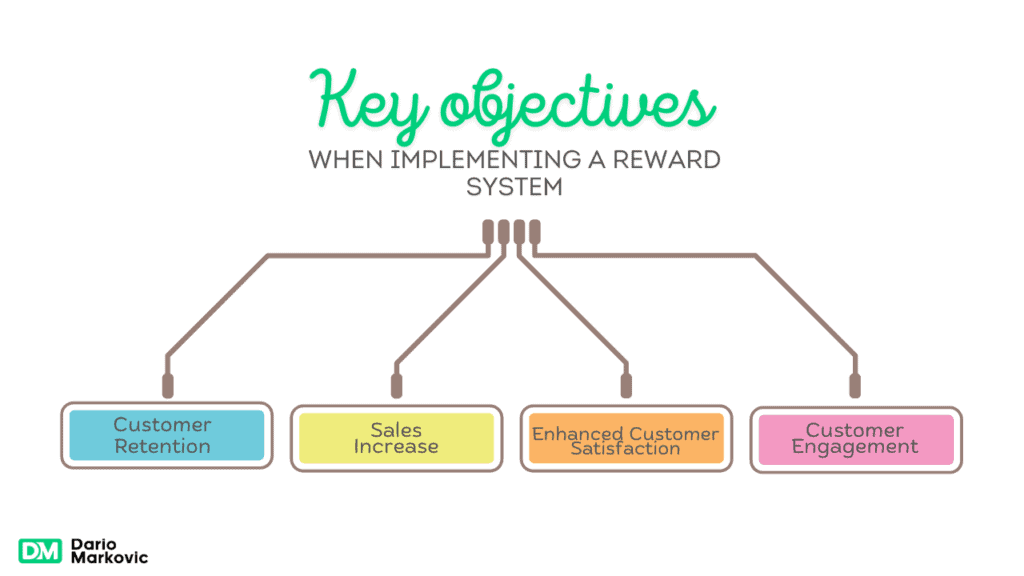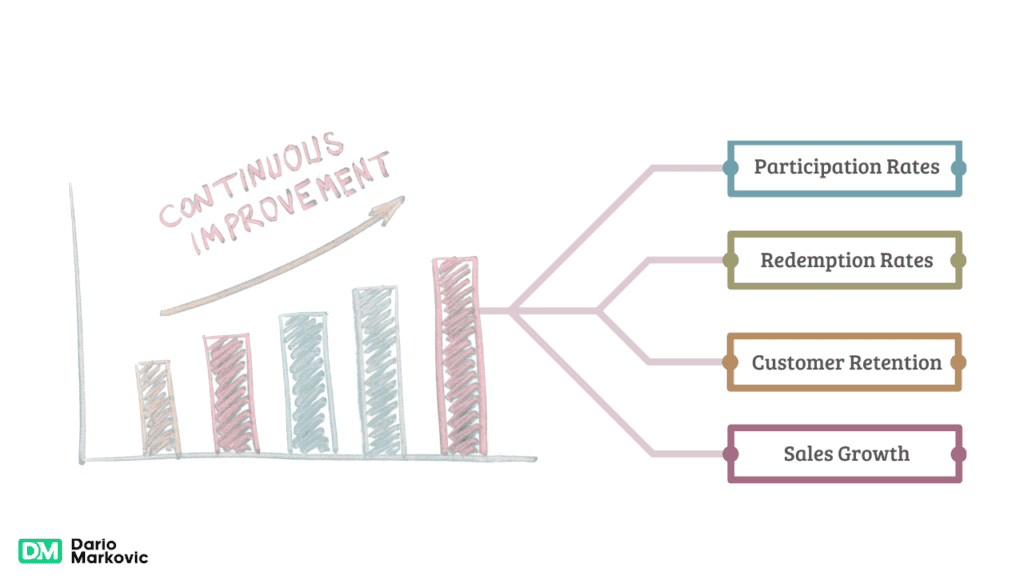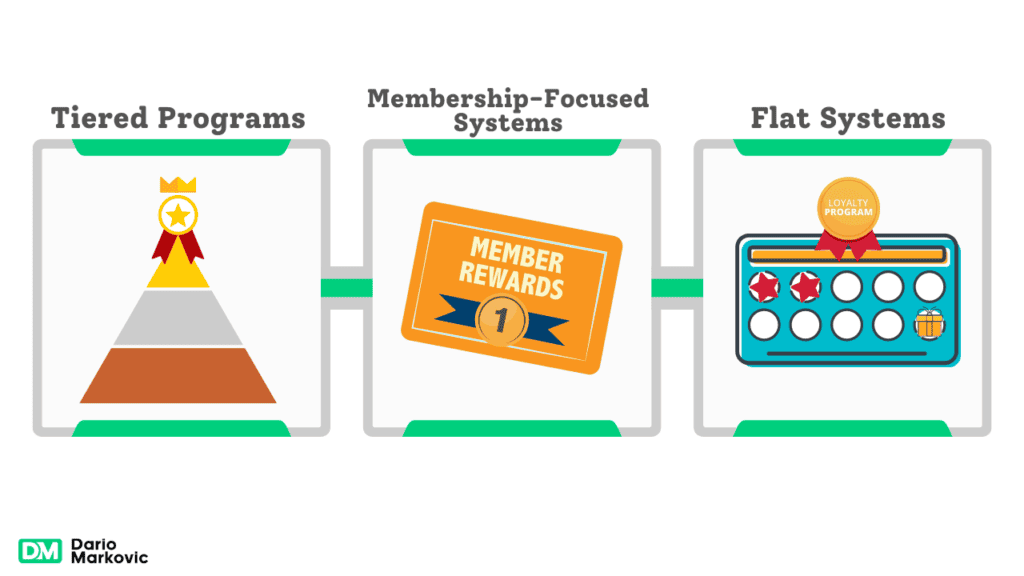A customer service recognition software is crucial for enhancing customer loyalty and satisfaction. By incentivizing positive behaviors and rewarding customer interactions, businesses can build stronger relationships with their clients.
One effective method to achieve this is through a points-based customer service reward system, where customers earn redeemable points for their interactions and purchases.
This article serves as a comprehensive guide for implementing a points-based reward system within your customer service teams. We will cover key areas such as:
- Defining Objectives: Setting clear goals that align with your overall business strategy.
- Points Earning Framework: Establishing a structured method for earning points based on various behaviors.
- Selecting Rewards: Choosing motivating rewards that resonate with your customers.
- Communication Strategies: Effectively promoting the reward system to ensure clarity and engagement.
- Monitoring and Improvement: Tracking performance and making continuous improvements.
By following these steps, you can create a successful reward program that not only boosts customer satisfaction but also drives repeat business.
Step-by-Step Instructions to Implement a Points-Based Customer Service Reward System
Creating a points-based reward system for customer service can significantly boost customer loyalty and satisfaction. By incentivizing positive behaviors and rewarding meaningful interactions, you can forge stronger connections with your clients and drive repeat business.
This guide provides a detailed roadmap for establishing a successful reward program, from setting clear objectives to continuous improvement. Whether you’re looking to enhance customer retention or increase sales, these steps will help you build a system that aligns with your business goals and engages your customers effectively.
Step 1: Defining Clear Objectives for Your Points-Based Customer Service Reward System
Setting clear goals for your points-based reward system is crucial. These objectives must align with your overall business strategy to ensure the program’s success and relevance.
Customer service recognition software can play a pivotal role in tracking and managing these objectives effectively.

Reward System Objectives
Clearly defined objectives provide a roadmap for your reward system, guiding every decision from point allocation to reward selection. This alignment ensures that the efforts put into the reward system contribute directly to broader business goals.
Common Objectives
Companies usually focus on several key objectives when implementing a reward system:
- Customer Retention: One of the primary goals is to improve customer retention. By rewarding loyal customers, you encourage repeated interactions and purchases, fostering long-term relationships.
- Sales Increase: Boosting sales through incentivizing purchases is another common objective. Offering points for each purchase can drive higher sales volumes and increase average transaction values.
- Enhanced Customer Satisfaction: Providing rewards for positive customer feedback or engagement increases satisfaction levels. Happy customers are more likely to become brand advocates.
- Customer Engagement: Encouraging customers to engage with your brand, whether through social media interactions or participation in surveys, helps build a community around your business.

Examples
For instance, if your goal is to increase sales, you might offer double points during promotional periods or for higher-value purchases. If customer retention is your focus, providing exclusive rewards or early access to new products could be effective strategies.
Defining clear objectives ensures that every aspect of your reward system is purpose-driven, aligned with strategic goals, and designed to deliver measurable outcomes.
Step 2: Developing a Structured Points Earning Framework
Creating a structured points earning framework is essential to the success of your reward system. This framework should clearly outline how customers can earn points based on various behaviors and interactions.
Defining Points-Earning Activities
To start, identify the key activities that will earn customers points. These might include:
- Purchases: Award points for each dollar spent. For example, you could offer 1 point per $1 spent.
- Referrals: Encourage word-of-mouth marketing by rewarding customers who refer new clients. You might offer 50 points for each successful referral.
- Customer Service Interactions: Recognize positive customer service engagements, such as completing feedback surveys or participating in online forums, with additional points.
- Leveraging customer service recognition software can help in tracking these interactions accurately.
Ensuring Fairness and Transparency
Fairness and transparency are crucial to maintaining trust in your reward system. To achieve this:
- Clear Guidelines: Publish detailed guidelines outlining how points are earned. This may include a FAQ section on your website or informational brochures.
- Consistent Application: Ensure that all employees apply the points earning rules consistently across all customer interactions.
- Real-Time Updates: Use technology to provide real-time updates on point balances through mobile apps or online portals, allowing customers to track their progress easily.
Example of a Points Allocation Table
| Activity Points Earned $1 Spent | 1 Point |
| Successful Referral | 50 Points |
| Completing Feedback Survey | 10 Points |
| Sharing Experience on Social Media | 5 Points |
A well-defined points earning framework not only motivates customer participation but also aligns customer behavior with your business objectives.
Step 3: Selecting Motivating Rewards That Resonate With Your Customers
Choosing the right rewards is crucial for the success of your points-based reward system. The rewards must be appealing enough to motivate participation and encourage ongoing engagement. Here are some essential criteria to consider when selecting rewards:
Reward Selection Criteria
- Relevance: Ensure that the rewards are relevant to your customer base. Conduct surveys or analyze purchasing data to understand what your customers value most.
- Value Perception: The perceived value of the rewards should be high. Customers should feel that their efforts in earning points are worthwhile.
- Achievability: Rewards should be attainable within a reasonable timeframe. If goals seem too distant, it may deter participation.
- Variety: Offering a range of rewards caters to different customer preferences and increases overall satisfaction.
Examples of Effective Rewards

Discounts:
- Discounts on future purchases can incentivize repeat business.
- Tiered discounts based on point milestones can create a sense of progression.
Exclusive Products or Services:
- Unique items or services not available to non-members can add an element of exclusivity.
- Limited-edition products or early access to new releases can drive excitement.
Personalized Experiences:
- Customized rewards based on individual customer preferences enhance the personal connection with your brand.
- Examples include personalized thank-you notes, special birthday offers, or invitations to VIP events.
Motivational Incentives
- Creating exclusive offers for members only adds an elite feel to the program and can boost participation rates.
- Consider implementing motivational incentives like bonus points for engaging in specific high-value actions such as referrals or social media interactions.
By carefully selecting motivating rewards, you ensure that your points-based reward system not only attracts but also retains customer interest, driving long-term loyalty and engagement.
Step 4: Effective Communication Strategies to Promote Your Reward System
Establishing a communication plan is critical in ensuring the success of your points-based reward system. Clear and consistent communication helps build customer awareness and ensures that both customers and employees understand how to earn and redeem points effectively.

Key Strategies
1. Clear Messaging
Ensure that every aspect of the reward program is clearly outlined. This includes how to earn points, what actions qualify for points, the value of each point, and how points can be redeemed.
- Use simple language and avoid jargon to make the program accessible to everyone.
2. Multi-Channel Outreach
Utilize various channels to reach a broader audience. These channels can include:
- Email Campaigns: Send regular updates about the program, highlighting new ways to earn points or introducing limited-time rewards.
- Social Media: Share engaging posts and stories about the reward system on platforms like Facebook, Instagram, and Twitter. Use visuals to capture attention.
- In-Store Signage: For businesses with physical locations, place informative posters or digital displays where customers can easily see them.
- Website Banners: Add banners or pop-ups on your website that explain the reward system and provide links to more detailed information.
3. Employee Training
Train your customer service team thoroughly so they can effectively communicate the program details to customers. They should be able to answer questions about earning and redeeming points confidently.
- Provide employees with FAQs and cheat sheets for quick reference during customer interactions.
4. Regular Updates
Keep both customers and employees informed about any changes or additions to the reward system through newsletters, internal memos, or SMS alerts.
- Highlight success stories or testimonials from satisfied participants to encourage others to engage with the program.
5. Interactive Platforms
Use mobile apps or online portals where customers can easily track their points, view available rewards, and manage their accounts.
- Ensure these platforms are user-friendly and provide real-time updates on point balances and redemption options.
By employing these communication strategies, you ensure that your reward system remains transparent, engaging, and top-of-mind for both customers and employees.
Step 5: Monitoring Effectiveness and Making Continuous Improvements to Your Reward System
Performance assessment methods are crucial for ensuring your points-based reward system meets its objectives. Regularly track key metrics to gauge the program’s success:
- Participation Rates: Measure how many customers are actively participating in the reward program.
- Redemption Rates: Track how often and how quickly customers redeem their points.
- Customer Retention: Analyze if the reward system impacts customer loyalty and repeat business.
- Sales Growth: Evaluate whether there is a correlation between the reward system and increased sales.

Collecting feedback from both customers and employees provides invaluable insights into areas needing improvement. Implement various feedback mechanisms:
- Surveys: Send periodic surveys to participants asking for their opinions on the ease of earning and redeeming points.
- Focus Groups: Conduct focus groups with a diverse set of customers to gain deeper insights into their experiences.
- Employee Feedback: Regularly check in with customer service teams to understand their perspective on the system’s efficiency and areas for enhancement.
Use this feedback to fine-tune your program, addressing pain points and making adjustments that improve user satisfaction.
“Customer feedback is essential for understanding what motivates your audience and what aspects of the reward system may need refinement.”
Regular monitoring not only ensures that your reward system remains effective but also helps in making continuous improvements that keep it relevant and engaging.
Types of Points-Based Reward Programs You Can Consider Implementing
When considering a points-based reward system, it’s crucial to choose a structure that aligns with your business goals and customer preferences. Two primary types of reward programs are tiered systems and flat systems, each offering unique advantages.

1. Type: Tiered Programs
Tiered programs categorize customers into different levels based on their engagement or spending. These levels offer escalating benefits as customers progress, creating a sense of achievement and exclusivity.
Examples of Tiered Programs
- Bronze, Silver, Gold Tiers: Customers move through these tiers by accumulating points. Higher tiers provide better rewards such as larger discounts or exclusive access to events.
- Airlines Frequent Flyer Programs: Airlines often use tiered systems where frequent flyers can achieve elite status for perks like priority boarding and free upgrades.
Benefits of Tiered Programs
- Encourages continuous engagement and higher spending as customers aim to reach the next tier.
2. Type: Flat Systems
Flat systems offer a straightforward approach where customers earn points at a consistent rate without tiers.
Examples of Flat Systems
- Simple Earn-and-Burn Model: Points are earned per purchase or action and can be redeemed directly for rewards without needing to reach a particular level.
- Coffee Shop Loyalty Programs: Coffee shops often use flat systems where customers earn one point per visit, redeemable for a free beverage after a set number of visits.
Benefits of Flat Systems
- Easy to understand and manage, appealing to customers who prefer simplicity.
3. Type: Membership-Focused Systems
Some programs blend aspects of both tiered and flat structures within a membership-focused framework.
Examples of Membership-Focused Systems
- Paid Memberships: Customers pay an annual fee for membership that provides immediate access to specific benefits and the ability to earn points.
- Amazon Prime Rewards Program: Amazon Prime offers members benefits like free shipping and access to streaming services while also allowing them to earn points on purchases.
Benefits of Membership-Focused Systems
- Generates upfront revenue while fostering loyalty through exclusive perks.
Choosing the right type of points-based reward program depends on your business model and customer expectations. Tailoring the program to resonate with your target audience will enhance engagement and loyalty.
Enhancing Customer Experience Through Seamless Interactions with Your Reward System
A seamless experience in earning and redeeming points is crucial for customer satisfaction. Seamless experience design ensures that every interaction with your reward system is smooth and intuitive. Here’s how you can achieve this:
Leveraging Technology for Seamless Interactions
- Mobile Apps: Develop a dedicated mobile app where customers can easily track their points, view available rewards, and redeem them instantly. Apps provide a user-friendly platform that travels with your customers.
- Online Platforms: Integrate your rewards system into your e-commerce site or create a dedicated web portal. This allows customers to manage their points and rewards from any device.
Key Elements to Consider
- User Interface (UI) Design: Ensure the interface is clean, intuitive, and easy to navigate. A cluttered or complex UI can frustrate users and hinder engagement.
- Real-Time Updates: Provide real-time updates on point accrual and redemption. Customers should see their points balance change instantly after qualifying actions.
- Personalization: Use data insights to tailor the reward experience for individual customers. Personalized recommendations enhance engagement and satisfaction.
- Accessibility: Make sure the platform is accessible to all users, including those with disabilities. This broadens your reach and compliance with regulations.
Benefits of Digital Solutions
- Convenience: Digital solutions like mobile apps and online platforms allow customers to engage with the reward system at their convenience, boosting participation rates.
- Integration: Seamlessly integrate your reward system with other digital touchpoints like social media or email campaigns for a unified customer experience.
By focusing on seamless experience design through digital solutions, you create an effortless and rewarding journey for your customers, leading to higher engagement and loyalty.
Engagement Strategies to Maintain Long-Term Interest in Your Points-Based Reward Program
Keeping participants engaged over time is crucial for the success of your points-based reward program. Implementing gamification techniques and other ongoing participation strategies can significantly enhance engagement.
Gamification Techniques
- Challenges: Introduce weekly or monthly challenges where customers can earn bonus points for completing specific tasks, such as making a certain number of purchases or referring new customers. Example: “Earn 50 extra points if you make five purchases this month.”
- Competitions: Host competitions where customers compete to earn the most points within a set period. Offer attractive rewards for top performers. Example: “Top three customers with the highest points this quarter win exclusive products.”
Ongoing Participation Strategies
- Streak Rewards: Encourage consistency by rewarding customers who engage with your brand consecutively over several days or weeks. Example: “Log in and make a purchase daily for seven days to earn double points.”
- Seasonal Promotions: Align point-earning opportunities with seasonal events, holidays, or sales periods. Example: “Double points on all purchases during Black Friday weekend.”
- Personalized Offers: Tailor rewards and offers based on individual customer preferences and purchasing history. Example: “Special birthday bonus points that can be redeemed for personalized gifts.”
Maintaining long-term interest requires continuous innovation and adaptation. Regularly introducing new challenges, competitions, and personalized rewards keeps the reward program fresh and engaging, ensuring sustained customer participation.
Utilizing Data Insights for Targeted Marketing Campaigns within Your Reward System Framework
Collecting data on customer behaviors through your reward system is crucial for gaining insights into engagement trends. This information helps in understanding what motivates your customers, which aspects of the program they find most appealing, and where improvements can be made.
Data Collection Strategies
Effective data collection strategies include:
- Track Customer Interactions: Monitor interactions such as purchases, referrals, feedback submissions, and social media engagements.
- Survey Feedback: Implement periodic surveys to gather direct feedback about the reward system.
- Purchase History Analysis: Examine purchase patterns and frequency to identify high-value customers.
- Behavioral Data: Capture data on how customers navigate your website or app, what products they view, and which pages they spend the most time on.
Behavioral Insights Utilization
Once you have collected sufficient data, using data analytics can help tailor marketing strategies based on participant behavior:
- Segment Customers: Divide your customer base into segments based on their engagement levels and purchasing behaviors. For instance, create segments such as “frequent buyers,” “occasional buyers,” and “inactive users.”
- Personalized Offers: Use insights to craft personalized offers that resonate with each segment. Frequent buyers might appreciate early access to new products, while occasional buyers could be incentivized with exclusive discounts.
- Targeted Campaigns: Design targeted marketing campaigns that focus on the specific interests and behaviors of different customer segments. Email marketing, social media ads, and in-app notifications can all be tailored to engage each group effectively.
Key Metrics
Monitoring key metrics helps in assessing the performance of your targeted marketing efforts:
- Engagement Rates: Track how often customers interact with your marketing messages.
- Redemption Rates: Measure the percentage of rewards redeemed by customers.
- Customer Retention: Observe changes in retention rates as a result of targeted campaigns.
By leveraging these insights, you can refine your reward system continually, ensuring it remains attractive and engaging to your customers. Effective use of data not only enhances the customer experience but also drives loyalty and boosts overall business performance.
Training Employees on Delivering Exceptional Service with Your Reward Program in Mind
Effective employee training programs implementation is crucial for the success of your points-based reward system.
Here are essential components to focus on:
- Comprehensive Understanding: Ensure all staff members understand how the reward system works, including point allocation and redemption processes.
- Customer Assistance: Train employees to assist customers with common queries about earning and redeeming points. This builds trust and enhances customer satisfaction.
- Scenario-Based Learning: Use real-life scenarios to train staff on handling various customer interactions related to the reward system.
- Ongoing Education: Regularly update training materials and conduct refresher courses as the program evolves.
“Proper employee training can significantly impact the effectiveness of your rewards program, leading to higher customer engagement and satisfaction.”
By investing in thorough training, you empower your team to deliver exceptional service that maximizes the benefits of your reward system.
Dario`s Summary
In summary, a well-structured points-based customer service reward system can significantly enhance customer loyalty and satisfaction. To maximize the effectiveness of this system, integrating customer service recognition software is highly recommended. This advanced tool helps track and analyze customer interactions, ensuring that rewards are allocated fairly and transparently.
Monitoring performance and making continuous improvements are also crucial for long-term success. Whether you’re aiming to increase sales, boost retention, or enhance customer engagement, utilizing customer service recognition software provides the technological edge needed to create a highly effective and responsive reward system.
For more tips and in-depth advice on leveraging technology to enhance your reward programs, follow my content!



